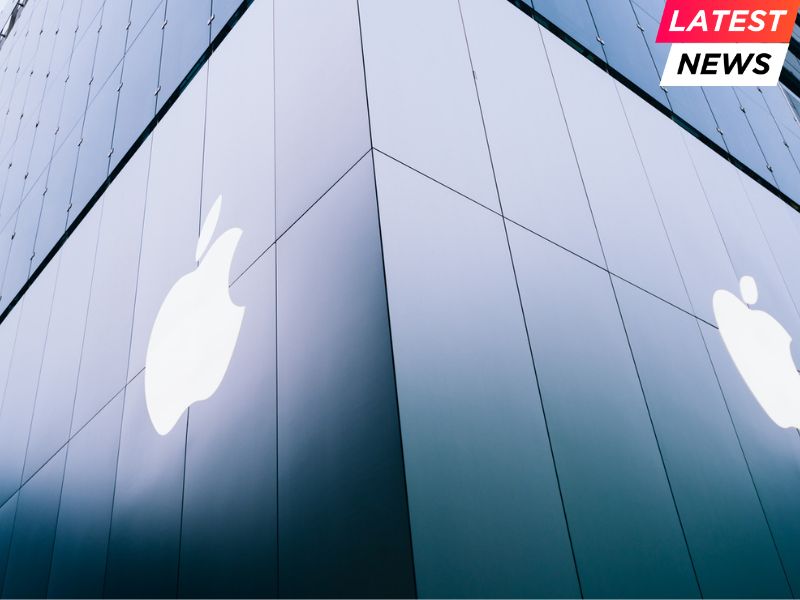The financial markets witnessed an unexpected surge as Apple’s performance triggered a powerful rally in the Nasdaq, despite ongoing concerns around tariffs and volatile earnings reports. This episode highlights Apple’s resilience and the interconnectedness of tech giants, global trade policies, and investor sentiment.
Apple’s Strong Earnings: A Beacon in the Storm
Despite widespread fears that escalating tariffs could dampen U.S. tech sector growth, Apple delivered quarterly results that exceeded market expectations. Earnings momentum from stronger-than-anticipated iPhone and services sales provided much-needed confidence to investors, sending Apple’s stock sharply higher. This leap didn’t just benefit Apple itself; it spurred a broad-based rally across tech stocks, propelling the Nasdaq upward.
This performance underscores the continued dominance of Apple in the technology landscape. Several analysts have credited Apple’s ability to diversify its revenue streams through wearables, software, and services like iCloud and Apple TV+ as key factors behind its resilience. Even as supply chain issues and inflationary pressures persist, Apple’s adaptability and focus on high-margin services appear to buffer it against short-term shocks.
Tariff Exemptions and Trade Policy Shifts
A key catalyst for the rally was news that certain Apple products, including critical semiconductor components, would receive tariff exemptions as trade tensions between the U.S. and China evolved. This policy move was seen as a strategic effort to support domestic tech manufacturing and mitigate supply chain disruptions. By securing these exemptions, Apple signaled its global influence and ability to navigate trade headwinds.
The exemptions come at a time when many technology companies are re-evaluating their global supply chains. With semiconductor tariffs looming and uncertainty over further trade restrictions, many tech giants are ramping up investments in domestic manufacturing and seeking alternative suppliers. Companies are also adopting nearshoring and reshoring strategies to reduce dependence on volatile regions and ensure continuity in production.
Market Volatility and the Anatomy of a Relief Rally
The backdrop to Apple’s success was one of significant market volatility. Investors have been cautious amid shifting trade policies and concerns about the broader impact of tariffs on tech profitability. News of Apple’s robust results, however, helped ease anxieties, triggering a relief rally that extended to semiconductor and chipmaker stocks, often bellwethers of economic health and innovation.
Notably, companies like NVIDIA, AMD, and Intel also recorded sharp gains in the wake of Apple’s results, as optimism filtered through the broader tech sector. The Nasdaq’s surge reflected not just excitement about Apple, but a reset of expectations around the effect of global trade tensions on earnings potential for the entire technology industry.
Broader Impact: Tech Leadership, Strategic Investment, and Investor Optimism
The rally wasn’t contained to Apple alone. Tech stock gains spread across the Nasdaq, underscoring the market’s reliance on tech leadership for overall equity resilience. The episode also highlighted themes such as strategic investments in U.S. manufacturing, supply chain adjustments for tariff preparedness, and renewed investor optimism.
As companies invest in automation, artificial intelligence, and domestic production facilities, there’s a noticeable shift in how U.S. tech is approaching global risk management. The move to insulate operations from geopolitical shocks is shaping both corporate strategies and investor expectations.
For global markets, Apple’s rally serves as a reminder of how pivotal tech stocks are not just for indices like the Nasdaq but for overall sentiment across Wall Street and international exchanges. The company’s performance often acts as a benchmark for tech sector health, influencing decisions by institutional investors, fund managers, and retail traders alike.
What’s Next for the Nasdaq and Apple?
While Apple’s win offers a temporary shield against external shocks, uncertainty remains. The durability of this rally will depend on how future tariff deadlines unfold, changes in global trade policy, and the ability of tech firms to innovate despite headwinds.
Key points to watch:
- Ongoing tariff negotiations between the U.S. and China.
- Evolution of semiconductor supply chains.
- Earnings reports from other tech giants.
- Potential volatility around future trade policy announcements.
- The response of global markets to domestic policy shifts in the U.S., China, and the EU.
The Role of Artificial Intelligence and Innovation
Another layer to consider is the accelerated adoption of artificial intelligence (AI) and automation in response to uncertainties. Apple and other tech leaders are leveraging AI in product development, logistics, and customer experience, providing a competitive edge in challenging times. This growing focus on innovation not only mitigates risks but can also unlock new revenue streams.
Conclusion
Apple’s ability to spur a Nasdaq rally amid earnings turbulence and tariff threats demonstrates the company’s central role in global equity markets. For investors, the story underscores the importance of monitoring both macroeconomic risks and company-specific fundamentals in an increasingly interconnected financial landscape.
With ongoing developments in trade policy, technology innovation, and global supply chains, the tech sector and Apple in particular will likely remain at the center of market dynamics in the months ahead.
